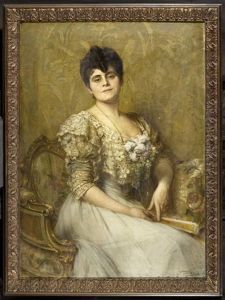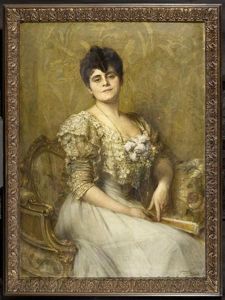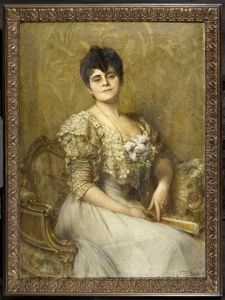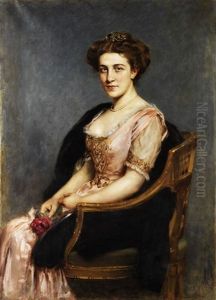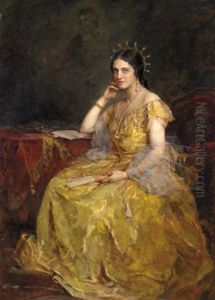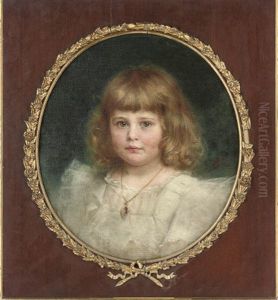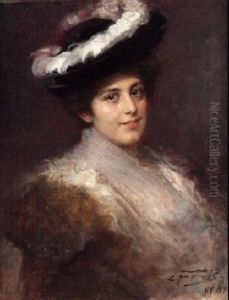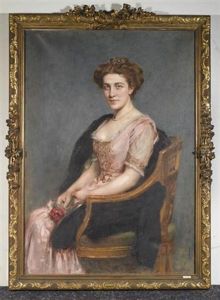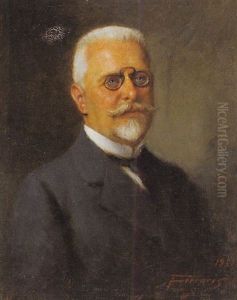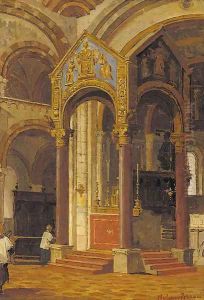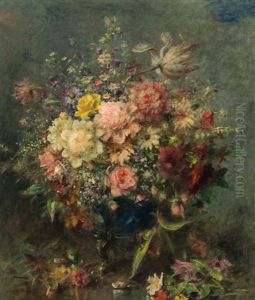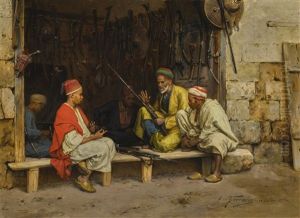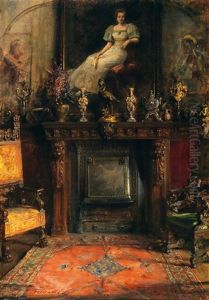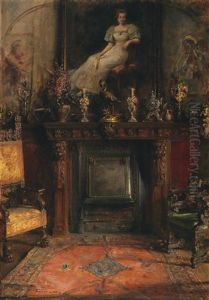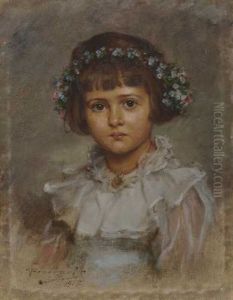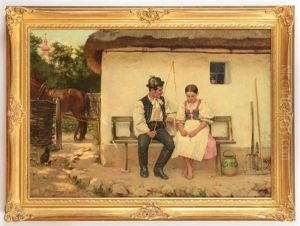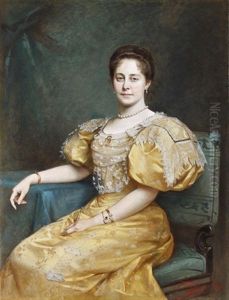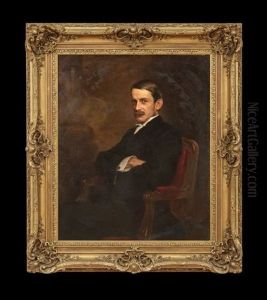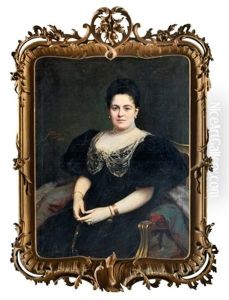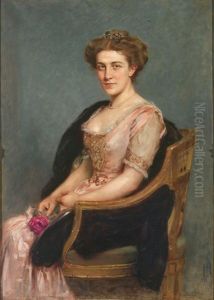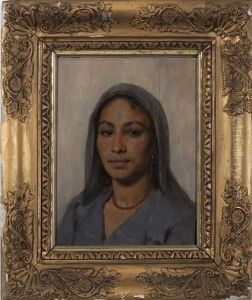Arthur von Ferraris Paintings
Arthur von Ferraris, born in 1856 in Budapest, Hungary, was a distinguished Austro-Hungarian painter known for his elegant genre scenes and interior paintings. He belonged to an era of European art that was characterized by a focus on realism and an interest in capturing the nuances of contemporary life and society. His works often depicted scenes of aristocracy and bourgeoisie, providing a window into the lifestyle and interiors of the late 19th and early 20th centuries.
Von Ferraris studied at the Vienna Academy under the guidance of Christian Griepenkerl and Anselm Feuerbach. These were two prominent artists who played a significant role in his artistic development. After honing his skills, he traveled extensively, which was a common practice among artists of his time. His travels took him to Italy and other parts of Europe, where he absorbed various influences that would later be reflected in his work.
The artist's paintings are characterized by a meticulous attention to detail and a rich color palette. Ferraris demonstrated a remarkable ability to render textures and materials, from the luxurious fabrics of the garments to the intricate woodwork of furniture. His interiors often included ornate elements and a sense of depth, inviting viewers to step into the world he depicted.
Arthur von Ferraris was a part of the cultural milieu of the Austro-Hungarian Empire, where art was an essential aspect of the social and intellectual life. His work was well-received, and he exhibited in various salons and galleries, gaining recognition and patronage from the upper classes.
Despite the fact that he lived through World War I and the resulting collapse of the Austro-Hungarian Empire, von Ferraris continued to create art that reflected the bygone era rather than the tumultuous times he was living through. He remained true to his style even as the art world around him underwent significant changes with the emergence of modernism and avant-garde movements.
Arthur von Ferraris passed away in 1936, leaving behind a legacy of art that serves as a historical record of the aesthetics and sensibilities of his time. His works are still admired today for their beauty and historical value, and can be found in various art collections and museums across Europe.



